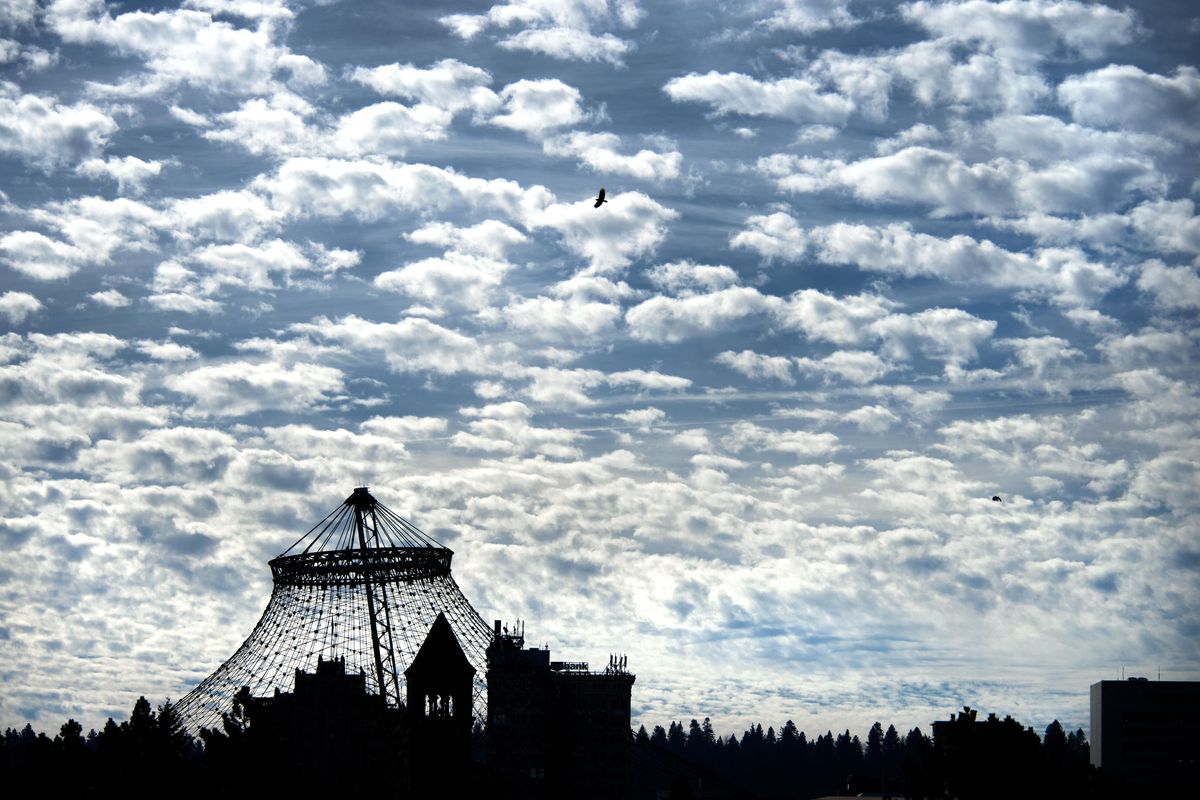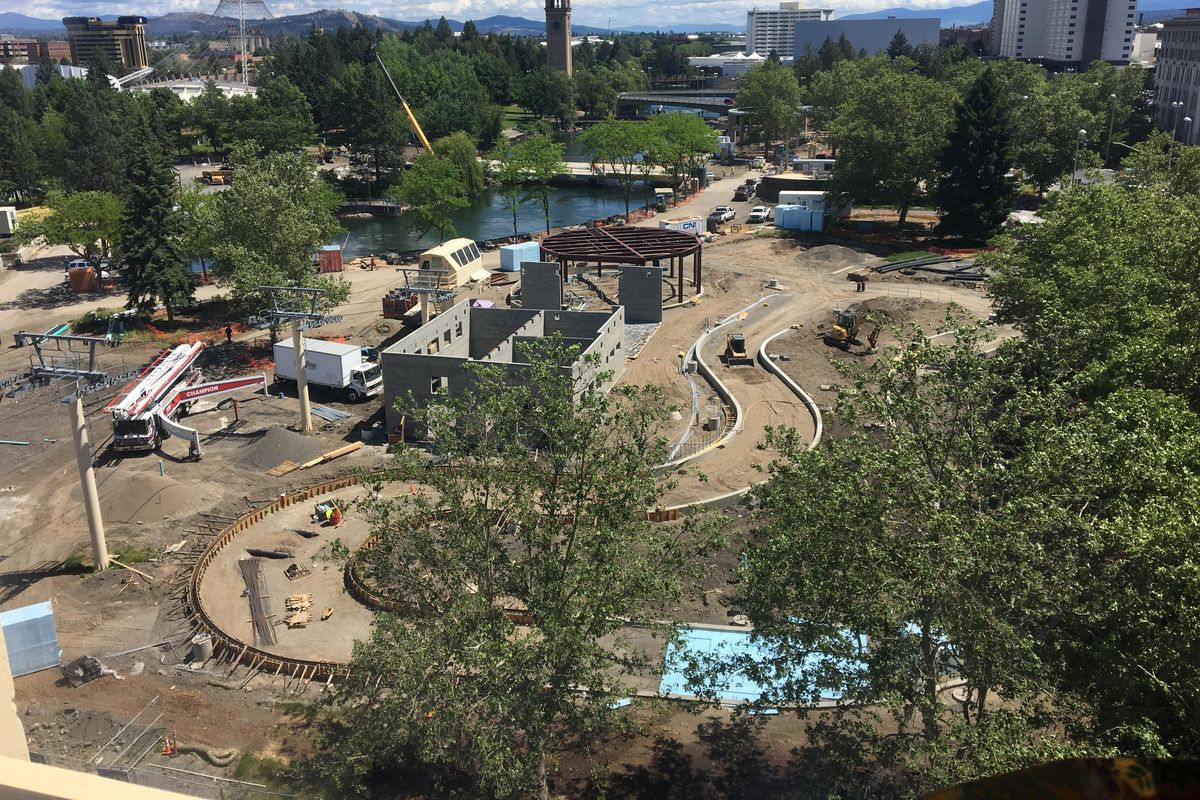Riverfront Park redesign continues a legacy of balance
Under a blanket of altocumulus clouds, the U.S. Pavilion and the Clock Tower in Riverfront Park dominate the Spokane skyline. (Dan Pelle / The Spokesman-Review)Buy a print of this photo
David Evans, the chief site designer for Expo ’74 in the heart of Spokane’s downtown, returned recently after 40 years away to the same South Hill home he lived in while developing several plans that came to life in what is now Riverfront Park.
“Riverfront Park has, as long as I remember, had a yin yang tug between the priorities of nature vs. commerce, passive vs. active, native vs. developed and funded vs. self-sustaining,” Evans wrote in a letter to The Spokesman-Review this month about his view of the park’s renovation. The renewal of the park is taking shape this summer funded by more than $64 million worth of bonds purchased with taxpayer money.
In recent months, the board of volunteer citizens guiding the redevelopment grappled with another conflict: past vs. future. Those discussions have centered on whether to keep amusement rides and IMAX theater, and if the city should re-cover the U.S. Pavilion gifted by the federal government. The pavilion’s cover was removed in 1979.
What is the new park going to be, and how is that different from what it has been?
Those leading the efforts to renovate the 100-acre attraction in the middle of Spokane’s downtown envision a place where concerts and other marquee events fill a signature pavilion. On the south bank of the river, the park will have a ribbon for skaters (ice- and roller-) and the historic Looff Carrousel will have a new home. The IMAX theater is slated for demolition as part of the pavilion’s overhaul.

The north bank, where a final design has not been solidified, would feature a regional playground that explains how an ice age shaped the plant life and geography of the Inland Northwest.
But a vocal group that remembers the park’s past is encouraging planners not to abandon the rides or IMAX. The rides have usually more-than covered their cost of operation. The IMAX in recent years has operated at a loss.
From his office seven stories above downtown, Spokane Mayor David Condon can see the new park taking shape. During an interview earlier this month, the mayor climbed atop a couch to see workers pouring cement into frames for the new ice ribbon feature, expected to open in November.
“You have these ideas, and then all of a sudden you can literally see them coming out of the ground,” Condon said.
For Spokane’s mayor, the boundaries of the park aren’t where the vision ends. Condon referenced the work of a combined stormwater tank and green space near City Hall, the already built Gathering Place plaza beneath the SkyRide gondolas, a proposed climbing space on city land just north of Spokane Falls and trails leading west and into Riverside State Park.
“To the end user, our vision is that you don’t really see the difference between those projects,” Condon said. “Really, it will just be this continuous thing, and reach out into the community.”
Criticism of the redevelopment has focused on the early projects, including bridge replacements and the ice ribbon, which have cost more than projected. Condon acknowledged those concerns but said he believed the project is on the right track.
“Some would say that we had delays. I would suggest that they were well-intended, and now you will see the benefit of that, to make sure it’s being done the right way,” he said.
Work in the park proper is expected to be completed in December 2019, the final month of Condon’s second term as mayor. The city already has spent about 18.5 percent of the bond money for the project, with $12.2 million paid for park improvements as of May. An additional $16.6 million has been dedicated to certain projects, leaving $37 million – a little more than half of the pot – available moving forward.
After watching the Park Board debate whether to re-cover the pavilion, Evans, the chief designer of Expo ’74, encouraged those who now hold the park’s future in their hands not to forget the importance of the Spokane River. Before it was a park, or an industrial rail yard, the islands served as fishing grounds for the Spokane Tribe of Indians, and the new design should pay reverence to that fact, Evans said.
“I very much like the idea of connecting, any way possible, with the water,” he said. “That’s one of the things we got from the Spokane Indians, this reverence for the water.”

